|
A mummy is a body, human or animal, whose skin and organs have been preserved by either intentional or incidental exposure to chemicals, extreme cold (ice mummies), very low humidity, or lack of air when bodies are submerged in bogs, so that the recovered body will not decay further if kept in cool and dry conditions. Some authorities restrict the use of the term to bodies deliberately embalmed with chemicals, but the use of the word to cover accidentally desiccated bodies goes back at least to the 1730s.
Mummies of humans and other animals have been found all around the world, both as a result of natural preservation through unusual conditions, and as cultural artifacts. Over one million animal mummies have been found in Egypt, many of which are
cats. The oldest known naturally mummified human corpse is a severed head dated as 6,000 years old, found in 1936 at the site named Inca Cueva No. 4 in South
America.
In addition to the well-known mummies of Ancient Egypt, deliberate mummification was a feature of several ancient cultures in areas of South America and Asia which have very dry climates. There are more than 1000 mummies in
Xinjiang, China. The oldest-known deliberate mummy is a child, one of the Chinchorro mummies found in the Camarones Valley,
Chile, and dates from around 5050
BC.
The English word mummy is derived from medieval Latin mumia, a borrowing of the Persian word mūm (موم), which means "bitumen". Because of the blackened skin, bitumen was once thought to be used extensively in ancient
Egyptian embalming
procedures. In English "mummy" as a term for a "medical preparation of the substance of mummies" is recorded from c. 1400, earlier than the sense of a complete body, with Richard Hakluyt in 1599 complaining that "these dead bodies are the Mummy which the Phisistians and Apothecaries doe against our willes make us to
swallow".
The OED defines a mummy as "the body of a human being or animal enbalmed (according to the ancient Egyptian or some analogous method) as a preparation for burial", citing sources from 1615 onwards, later than the first uses of other senses that include ground up mummy used as "a medicinal preparation", which dates to c.
1400. However sense 3c: "A human or animal body desiccated by exposure to sun or air. Also applied to the frozen carcase of an animal imbedded in prehistoric ice", is cited to Chamber's Cyclopaedia, 1727–41, and the
Victorian zoologist Francis Trevelyan
Buckland.
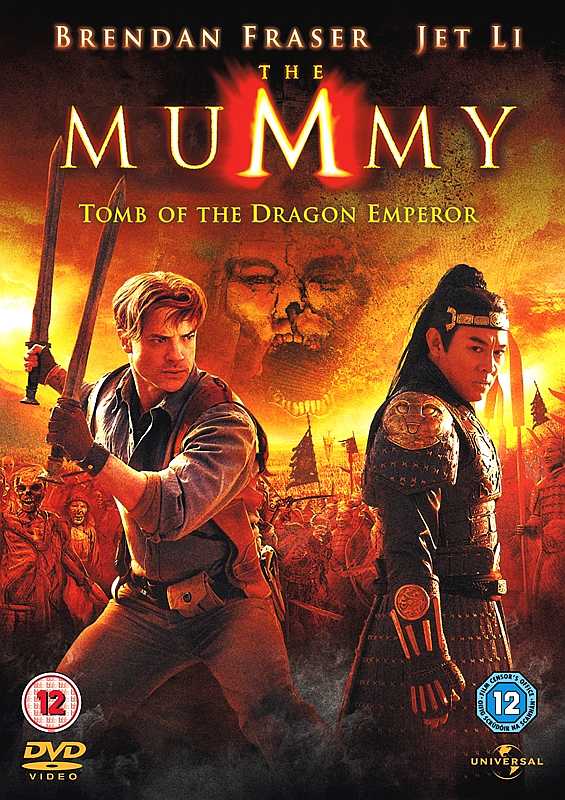
The Egyptian mummification process
The first evidence of intentional mummification in Egypt dates to 3500 B.C. Parts of mummified human bodies recovered from Hierakonpolis exhibit evidence of resin and linen
wrappings.
The earliest intact Egyptian mummy, ID #32751, dates to approximately 3400 BC, and is currently held in the British Museum. Mummy 32751 was previously nicknamed "Ginger" for its hair color, but this practice was stopped in 2004, in order to afford more dignity to human remains. Mummy #32751 was an adult male; the exact age at death is uncertain. It was apparently preserved by direct contact with the dry desert sand, though it is uncertain whether the mummification was intended. Pottery vessels were recovered from the grave, but their significance is
uncertain.
From the Middle Kingdom onwards, embalmers used salts to remove moisture from the body. The salt-like substance found on the banks of salt lakes, natron, dried out and preserved more flesh than bone. Once dried, mummies were ritualistically anointed with oils and perfumes. The emptied body was then covered in natron, to speed up the process of dehydration and prevent decomposition. Natron dries the body up faster than desert sand, preserving the body more effectively. Often finger and toe protectors were placed over the mummy's fingers and toes to prevent breakage. They were wrapped with strips of white linen to protect the body from being damaged. After that, they were wrapped in a sheet of canvas to further protect them.
Many sacred charms and amulets were placed in and around the mummy and the wrappings. This was intended to protect the mummy from harm and to give good luck to the Ka of the mummy. Once preserved, they were laid to rest in a sarcophagus inside a tomb, where it was believed that the mummy would rest eternally. The mummy's mouth would later be opened in an ritual designed to symbolize breathing, giving rise to legends about resurrected
mummies. In some cases, a mummy has been discovered in an unmolested tomb, only to be found in a state of advanced decomposition due to the proximity of the
water table. This was the case with the discovery in 1998 of the mummy of Iufaa, an Egyptian priest and administer who lived around 500 BC.
The most famous Egyptian mummies are those of Seti I, Rameses II, and Tutankhamun (13th century BC).
Scientific study of Egyptian mummies
Mummy in the British Museum
Mummies were much sought-after by museums worldwide in the 19th and early 20th centuries and many exhibit mummies today. Notably fine examples are exhibited at the Egyptian Museum in Cairo, at the Ägyptisches Museum in Berlin, and at the British Museum in London. The Egyptian city of Luxor is also home to a specialized Mummification Museum. The mummified remains of what turned out to be Rameses I ended up in a Daredevil Museum near Niagara Falls on the United States–Canada border; records indicate that it had been sold to a Canadian in 1860 and exhibited alongside displays such as a two-headed calf for nearly 140 years, until the Michael C. Carlos Museum in Atlanta, Georgia, which had acquired the mummy along with other artifacts, determined it to be royal and returned it to Egypt's Supreme Council of Antiquities. It is currently on display in the Luxor
Museum.
Modern scientific methods are being applied to mummies for archeological research. Mummies can be studied without the need to unwrap them using CAT scan and X-ray machines to form a digital image of the body. This has been very useful to biologists and anthropologists, providing a wealth of information about the health and life expectancy of ancient people. In 2008, the latest generation CT scanners (64- and 256-slice Philips machines at the University of Chicago) were used to study Meresamun, a temple singer and priestess at the Temple of Amun whose mummy now resides at the Oriental Institute of Chicago. Mummies have also been used in medicine to calibrate CAT scan machines at levels of radiation that would be too dangerous for living
people.
A female mummy in the British Museum.
Scientists interested in molecular cloning the DNA of mummies have reported findings of analyzable DNA in an Egyptian mummy dating to c. 400 BC. Although analysis of the hair of
Ancient Egyptian mummies from the Late Middle Kingdom has revealed evidence of a stable
diet, Ancient Egyptian mummies from c. 3200 BC show signs of severe anaemia and hemolytic
disorders.
Dr. Bob Brier of Long Island University has been the first modern scientist attempting to apply ancient Egyptian methods of mummification.
Post-interment care
Of special interest are finds that may testify to the beliefs of the ancient population of
Egypt. In two Neolithic cemeteries, skulls were found that indicated tooth replacement in antiquity. In both cases, the teeth were apparently collected and repositioned by people during later burials. Also in the same cemetery, four bracelets were found encircling a right humerus, which had been moved from its original position, during the deposition of a later burial. However, the bracelets were maintained in place by the insertion of the individual’s own right ulna and radius that had been fractured post-mortem. Such manipulation suggests that the intention was to repair the damage caused during the insertion of later interments. These intentions are supported by the discoveries of two skulls with mis-positioned teeth. In one case, the right orbit contained eighteen of the individual’s teeth; in the other, the nasal aperture contained one
tooth.
All of these examples suggest a deep conviction about the importance of body preservation, i.e., keeping the body together, ideally in an undisturbed state. Perhaps this was necessary to secure eternal life––similar to the belief that is so popular throughout all of ancient Egyptian
civilization.

Mummies
have other uses if you're trying to bring back
the
dead. The scary part is that it is really possible to reincarnate
an
Egyptian Pharaoh with current technology. John Storm discovers
how
in this modern adventure by Jameson Hunter.
Deliberate mummification in other cultures
South America
- Chinchorro Mummies
Chinchorro mummies are the oldest deliberate mummies.
South American cultures provide a mixture of deliberately prepared mummies, in the dry areas on the Pacific coast of Chile and southern Peru, and naturally mummified remains, mostly found high in the Andes mountains. The prepared Chinchorro mummies, are the oldest prepared mummified bodies ever found, ranging from about 5000–3000 BC, and apparently come from a society where all human burials were prepared for mummification. The bodies were carefully prepared, using three different techniques at different periods, but the cold, dry climate also aided desiccating the corpses and preserving them intact. Bodies in the Nazca Chauchilla Cemetery, from about AD 200–900, were also carefully prepared.
Inca Mummies
Replica of the well preserved Plomo mummy
Some of the best-preserved natural mummies date from the Inca period in Peru and Chile some
500 years ago, where children were ritually sacrificed on the summits of mountains in the Andes. In 1995, the frozen body, not desiccated and so not strictly a mummy, of a 11- to 14-year-old Inca girl who had died some time between 1440 and 1450 was discovered on Mount Ampato in southern Peru. Known as "Mummy Juanita" ("Momia Juanita" in Spanish) or "The Ice Maiden", some archaeologists believe that she was a human sacrifice to the Inca mountain god Inti. In Chile, there is 'Miss Chile', a well preserved Tiwanaku era
mummy. She is currently kept by the Gustavo Page Museum in San Pedro de Atacama. The atacaman community decided to stop displaying the mummies of their ancestor, as a sign of respect to their
forefathers. Three child mummies, discovered in 1999 on Mount Llullaillaco, 6700 m above sea level, are on display at the Museum of High Altitude Archaeology in
Salta, Argentina. In addition to the ancient Chachapoyas peoples, mummies are associated with the Chazuta culture of the Peruvian Upper Amazon
Canary Islands
Mummy of San Andrés in the Museo de la Naturaleza y el Hombre (Tenerife, Canary Islands, Spain)
Guanche mummies
The aboriginal guanches of the Canary Islands embalmed their dead; many mummies have been found in an extreme state of desiccation, each weighing not more than 6 or 7 pounds. Their method was similar to that of the ancient Egyptians. The process of embalming seems to have varied. In Tenerife, the corpse was simply wrapped up in goat and sheep skins (though many areas of the island also treated the body with vegetal elements), while on other islands, a resinous substance was used to preserve the body, which was then placed in a cave difficult to access, or buried under a tumulus. The work of embalming was reserved for a special class, with women for female corpses, and men for male. Embalming seems not to have been universal, and bodies were often simply hidden in caves or buried.
Italy
Rosalia Lombardo in 1995
The Capuchin catacombs of Palermo are burial catacombs in Palermo, Sicily, southern Italy. Today they provide a somewhat macabre tourist attraction as well as an extraordinary historical record.
Palermo's Capuchin monastery outgrew its original cemetery in the 16th century and monks began to excavate crypts below it. In 1599 they mummified one of their number, recently-dead brother Silvestro of Gubbio, and placed him into the catacombs. Originally the catacombs were intended only for the dead friars. However, in the following centuries it became a status symbol to be entombed into the Capuchin catacombs.
The bodies were dehydrated on the racks of ceramic pipes in the catacombs and sometimes later washed with vinegar. Some of the bodies were embalmed and others enclosed in sealed glass cabinets. Monks were preserved with their everyday clothing and sometimes with ropes they had worn as a penance.
One of the most popular mummies at the Capuchin catacombs is that of Rosalia Lombardo who died in 1920. After Rosalia's death, her father had Alfredo Salafia mummify the girl's body, with a method of which was unknown until recently. Rosalia Lombardo's body has begun to discolor, which is a sign of
decomposition.
Natural mummification
Mummies that are formed as a result of naturally-occurring environmental conditions, such as extreme coldness (Ötzi the Iceman, the
Ice Maiden, the Llullaillaco child mummies), acid (Tollund Man), salinity (Salt Man), or desiccating dryness (Tarim mummies), have been found all over the world. More than a thousand Iron Age corpses, so called bog bodies, have been found in bogs in northern
Europe, such as the Yde Girl and the Lindow
Man. Natural mummification of other animal species also occurs; this is most common in species from shallow saline water environments, especially those with a body structure which is particularly favourable to this process, such as seahorses and starfish. Old mummies such as the dinosaurs Leonardo, Dakota, and the Trachodon mummy in America were very valuable discoveries.
ASIA
China
In China a few mummies were found, preserved in the Tarim Basin with complete bodies and organs (brains, stomachs were also present from 2,500 year old mummies), and are able to be moved and articulated with care. These mummies were of European
descent, and are known today as the Tarim Mummies.
Siberia
In the summer of 1993, a team of Russian archaeologists led by Dr. Natalia Polosmak discovered the Siberian Ice Maiden, a Scytho-Siberian woman, in a sacred area known as the Pastures of Heaven, on the Ukok Plateau in the Altay Mountains near the Mongolian border. She was a member of the Pazyryk culture and lived some time in the 5th century BC. The mummy was frozen because of the severe climatic conditions of the Siberian steppe and never thawed. She was buried with six decorated horses and a symbolic meal for her last journey. Her left arm and hand were tattooed with animal style figures, including a highly stylized deer.
The Ice Maiden has been a source of some recent controversy. The mummy's skin has suffered some slight decay, and the tattoos have faded since the excavation. Some residents of the Altai Republic, formed after the breakup of the Soviet Union, have requested the return of the Ice Maiden, currently stored in Novosibirsk in
Siberia.
Another Siberian mummy, a man nicknamed "Conan," was discovered with tattoos of two monsters resembling griffins decorating his chest and three partially obliterated images which seem to represent two deer and a mountain goat on his left arm.
EUROPE
Italy
Natural mummification is rare, requiring specific conditions to occur, but it has produced some of the oldest known mummies. The most famous ancient mummy is Ötzi the Iceman, frozen in a glacier in the Ötztal Alps around 3300 BC and found in 1991. Also in the Umbria region mummies were discovered in
1805 in Ferentillo. These are twenty natural mummies, the most ancient of which dates four centuries and the most recent is from the 19th century.
Czech Republic
Mummified bodies in the crypt of the Capuchin monastery in
Brno.
About 30 bodies are preserved at the Kapucínská Krypta ("Capuchin crypt") in Brno, including that of Baron Franz von der
Trenck. Natural ventilation is thought to be responsible for the desiccation and preservation of the bodies. The oldest corpse is Kuneš James Rosenthal, who died in
1658.
Denmark
The Skrydstrup Woman was unearthed from a grave mound in Denmark.
Apart from several bog bodies, Denmark has also yielded several other mummies, such as the three Borum Eshřj mummies, the Skrydstrup Woman and the Egtved Girl, who were all found inside burial mounds, or tumulus.
In 1875, the Borum Eshřj grave mound was uncovered, which had been built around three coffins, which belonged to a middle aged man and woman as well as a man in his early
twenties. Through examination, the woman was discovered to be around 50–60 years old. She was found with several artifacts made of bronze, consisting of buttons, a belt plate, and rings, showing she was of higher class. All of the hair had been removed from the skull later when farmers had dug through the casket. Her original hairstyle is
unknown. The two men wore kilts, and the younger man wore a sheath of which contained a bronze dagger. All three mummies were dated to
1351–1345 BCE.
The Skrydstrup Woman was unearthed from a tumulus in Southern Jutland, in 1935. Carbon-14 dating showed that she had died around 1300 BCE; examination also revealed that she was around 18–19 years old at the time of death, and that she had been buried in the summertime. Her hair had been drawn up in an elaborate hairstyle, which was then covered by a horse hair hairnet made by sprang technique. She was wearing a blouse and a necklace as well as two golden earrings, showing she was of higher
class.
The Egtved Girl, dated to 1370 BCE, was found also inside a sealed coffin inside of a tumulus, in 1921. She was wearing a bodice and a skirt, including a belt and bronze
bracelets. Also found with the girl were the cremated remains of a child at her feet, and by her head a box containing some bronze pins, a hairnet, and an
awl.
Bog bodies
The United
Kingdom, the Republic of Ireland,
Germany, the Netherlands,
Sweden, and Denmark have produced a number of bog bodies, mummies of people deposited in sphagnum bogs, apparently as a result of murder or ritual sacrifices. In such cases, the acidity of the water, cold temperature and lack of oxygen combined to tan the body's skin and soft tissues. The skeleton typically disintegrates over time. Such mummies are remarkably well preserved on emerging from the bog, with skin and internal organs intact; it is even possible to determine the decedent's last meal by examining stomach contents. A famous case is that of the Haraldskćr Woman, who was discovered by labourers in a bog in Jutland in 1835. She was erroneously identified as an early medieval Danish queen, and for that reason was placed in a royal sarcophagus at the Saint Nicolai Church, Vejle, where she currently remains. Another famous bog body, also from Denmark, known as the Tollund Man was discovered in 1950. The corpse was noted for its excellent preservation of the face and feet, which appeared as if the man had recently died. To this day, only the head of Tollund Man remains, due to the decomposition of the rest of his body, which was not preserved along with the head.
NORTH
AMERICA
Greenland
In 1972, eight remarkably preserved mummies were discovered at an abandoned Inuit settlement called Qilakitsoq, in Greenland. The "Greenland Mummies" consisted of a six-month old baby, a four year old boy, and six women of various ages, who died around 500 years ago. Their bodies were naturally mummified by the sub-zero temperatures and dry winds in the cave in which they were found. The oldest completely preserved mummy in North America is Kwäday Dän Ts’ěnchi ("Long ago person found" in the Southern Tutchone language of the Champagne and Aishihik First Nations), found in August 1999 by three First Nations hunters at the edge of a glacier in Tatshenshini-Alsek Park. It was determined that he had died about 550 years ago and that his preserved remains were the oldest discovered in North
America.
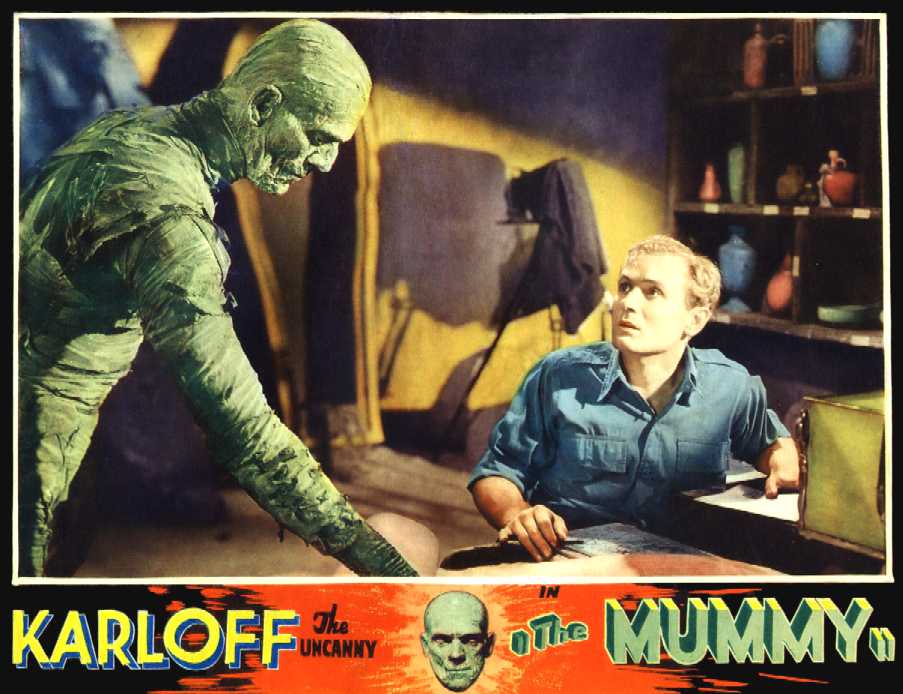
MEXICO
Intentional mummification was uncommon in pre-Columbian Mexico, though some examples have been found. Regardless of context, intentionally mummified remains that have been excavated in Mexico are commonly referred to as Aztec mummies. Public knowledge of Aztec mummies was due to traveling exhibits in the 19th and 20th centuries, though these just as likely used naturally mummified human bodies.
Natural mummification has been known to occur in several places in Mexico, though the most famous are the mummies of Guanajuato. A collection of these mummies, most of which date to the late 19th century, have been on display at El Museo de las Momias in the city of Guanajuato since 1970. The museum claims to have the smallest mummy in the world on display (a mummified fetus). It was thought that minerals in the soil had the preserving effect, however it may rather be due to the warm, arid
climate. Mexican mummies are also on display in the small town of Encarnación de Díaz,
Jalisco.
Self-mummification
Buddhist mummies and Sokushinbutsu
Monks whose bodies remain incorrupt without any traces of deliberate mummification are venerated by some Buddhists who believe they successfully were able to mortify their flesh to death. Self-mummification was practiced until the late 1800s in Japan and has been outlawed since the early 1900s.
Many Mahayana Buddhist monks were reported to know their time of death and left their last testaments and their students accordingly buried them sitting in lotus position, put into a vessel with drying agents (such as
wood, paper, or lime) and surrounded by bricks, to be exhumed later, usually after three years. The preserved bodies would then be decorated with paint and adorned with gold.
Victor H. Mair claims that the self-mummification of a Tibetan monk, who died ca. 1475 and whose body was retrieved relatively incorrupt in the 1970s, was achieved by the sophisticated practices of meditation, coupled with prolonged starvation and slow self-suffocation using a special belt that connected the neck with his knees in a lotus position.
Bodies purported to be those of self-mummified monks are exhibited in several
Japanese shrines, and it has been claimed that the monks, prior to their death, stuck to a sparse diet made up of salt, nuts, seeds, roots, pine bark, and urushi
tea. Some of them were buried alive in a pine-wood box full of salt.
Modern mummies
In the 1830s, Jeremy Bentham, the founder of utilitarianism, left instructions to be followed upon his death which led to the creation of a sort of modern-day mummy. He asked that his body be displayed to illustrate how the "horror at dissection originates in ignorance"; once so displayed and lectured about, he asked that his body parts be preserved, including his skeleton (minus his skull, which despite being mis-preserved, was displayed beneath his feet until theft required it to be stored elsewhere),[48] which were to be dressed in the clothes he usually wore and "seated in a Chair usually occupied by me when living in the attitude in which I am sitting when engaged in thought." His body, outfitted with a wax head created because of problems preparing it as Bentham requested, is on open display in the University College London.
During the early 20th century the Russian movement of Cosmism, as represented by Nikolai Fyodorovich Fyodorov, envisioned scientific resurrection of dead people. The idea was so popular that, after Vladimir Lenin's death, Leonid Krasin and Alexander Bogdanov suggested to cryonically preserve his body and brain in order to revive him in the
future. Necessary equipment was purchased abroad, but for a variety of reasons the plan was not
realized. Instead his body was embalmed and placed on permanent exhibition in the Lenin Mausoleum in Moscow, where it is displayed to this day. The mausoleum itself was modeled by Aleksey Shchusev on the Pyramid of Djoser and the Tomb of Cyrus.
In the state of Guanajuato, Mexico, mummies were discovered in a cemetery of a city named Guanajuato northwest of Mexico City (near León). They are accidental modern mummies and were literally "dug up" between the years 1896 and 1958 when a local law required relatives of the deceased to pay a kind of grave tax. The Guanajuato mummies are on display in the Museo de las momias, high on a hill overlooking the city. Another notable example of natural mummification in modern times is Christian Friedrich von Kahlbutz (1651–1702), whose body is on exhibit in his native
Kampehl.
In 1994, 265 mummified bodies were found in the crypt of a Dominican church in Vác,
Hungary from the 1729–1838 period. The discovery proved to be scientifically important, and by 2006 an exhibition was established in the Museum of Natural History in
Budapest. In March 2006, the body of the Greek Orthodox Monk Vissarion Korkoliacos was found intact in his tomb, after fifteen years in the grave. The event has led to a dispute between those who believe the preservation to be a miracle and those who claimed the possibility of natural mummification.
In 2010, a team led by forensic archaeologist, Stephen Buckley, mummified Alan Billis using techniques based on 19 years of research of 18th dynasty Egyptian mummification. The process was filmed for television, for the documentary "Mummifying Alan: Egypt's Last
Secret."
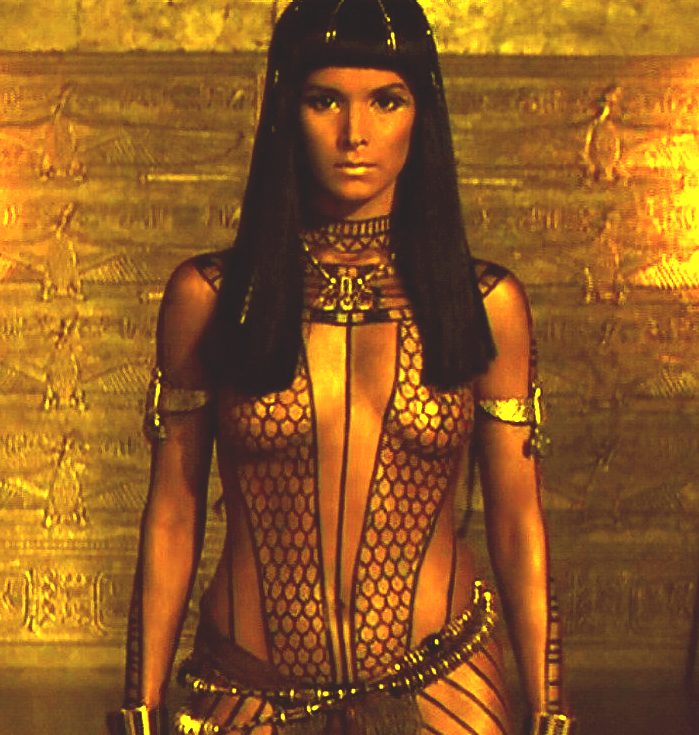
A
mummy brought back to life - Anck Su Namun
Commercial mummification
In 1975, an esoteric organization by the name of Summum introduced "Modern Mummification", a service that uses modern techniques along with aspects of ancient methods. The organization considers animals and people to have an essence that continues following the death of the body, and their mummification process is meant to preserve the body as a means to aid the essence as it transitions to a new destination.
Rather than using a dehydration process that was typical of ancient mummies, Summum uses a chemical process which includes leaving the body submerged in a tank of preservation fluid for several months. Summum claims its process preserves the body so well that the
DNA will remain intact far into the future, leaving open the possibility for cloning should science perfect the technique on humans.
The first person to formally undergo Summum's process of modern mummification was the founder of Summum, Summum Bonum Amen Ra aka Corky Ra, who died in January 2008. His body is encased inside a bronze mummiform (casket) that is covered in gold and stands inside the organization's
pyramid.
Summum is further discussed in the book The Scientific Study of Mummies by Arthur C. Aufderheide.
Plastination
Plastination is a technique used in anatomy to conserve bodies or body parts. The water and fat are replaced by certain plastics, yielding specimens that can be touched, do not smell or decay, and even retain most microscopic properties of the original sample.
The technique was invented by Gunther von Hagens when working at the anatomical institute of the University of Heidelberg in 1978. Von Hagens has patented the technique in several countries and is heavily involved in its promotion, especially as the creator and director of the Body Worlds traveling
exhibitions, exhibiting plastinated human bodies internationally. He also founded and directs the Institute for Plastination in Heidelberg.
More than 40 institutions worldwide have facilities for plastination, mainly for medical research and study, and most affiliated to the International Society for
Plastination.
Treatment of ancient mummies in modern times
In the Middle Ages, based on a mistranslation from the Arabic term for bitumen, it was thought that mummies possessed healing properties. As a result, it became common practice to grind Egyptian mummies into a powder to be sold and used as medicine. When actual mummies became unavailable, the sun-desiccated corpses of criminals, slaves and suicidal people were substituted by mendacious merchants. The practice developed into a wide-scale business that flourished until the late 16th century.
Two centuries ago, mummies were still believed to have medicinal properties to stop bleeding, and were sold as pharmaceuticals in powdered form as in mellified
man. Artists also made use of Egyptian mummies; a brownish paint known as Caput mortuum (Latin for death's head) was originally made from the wrappings of mummies. It was most popular in the 17th century, but was discontinued in the early 19th century when its composition became generally known to artists. Many thousands of mummified cats were also sent from Egypt to England to be processed for use in fertilizer.
During the 19th century, following the discovery of the first tombs and artifacts in Egypt, Egyptology was a huge fad in Europe, especially in Victorian England. European aristocrats would occasionally entertain themselves by purchasing mummies, having them unwrapped, and holding observation
sessions. These sessions destroyed hundreds of mummies, because the exposure to the air caused them to disintegrate.
The use of mummies as fuel for locomotives was documented by Mark Twain, but the truth of the story remains debatable. During the American Civil War, mummy-wrapping linens were said to have been used to manufacture
paper. Evidence for the reality of these claims is still equivocal.
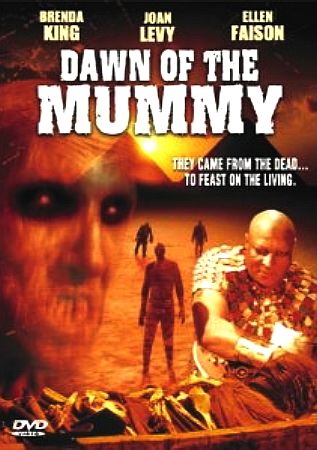
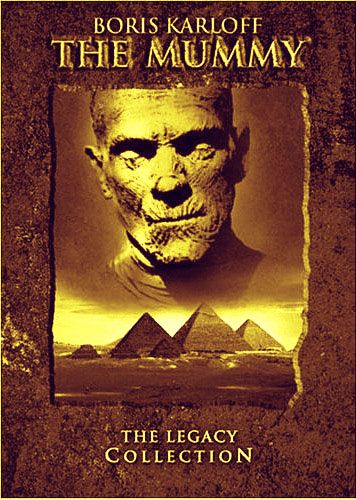
Lon Chaney, Jr. as Kharis in the film The Mummy's Ghost (1944)
In popular culture
In 1939, The Three Stooges spoofed the discovery of King Tutankhamun with their short film "We Want Our Mummy".
Mummies are commonly featured in horror genres as undead creatures. One of the earliest examples of this is The Mummy!: Or a Tale of the Twenty-Second Century, an 1827 novel written by Jane C. Loudon. This early, science-fiction work concerns an
Egyptian mummy named Cheops, who is brought back in to life in the 22nd century.
During the 20th century, horror films and other mass media popularized the notion of a curse associated with mummies (see Curse of the pharaohs). One of the earliest appearances was The Jewel of Seven Stars, a horror novel by Bram Stoker first published in 1903 that concerned an archaeologist's plot to revive an ancient Egyptian mummy. This book later served as the basis for the 1971 film Blood from the Mummy's Tomb.
Films representing such a belief include the 1932 movie The Mummy starring Boris Karloff as Imhotep; four subsequent 1940s' Universal Studios mummy films which featured a mummy named Kharis, who also was the title mummy in The Mummy, a 1959 Hammer remake of The Mummy's Hand and The Mummy's Tomb; and a remake of the original film that was released in 1999 (and later spawned two direct sequels and prequels and a spinoff movie). The belief in cursed mummies probably stems in part from the supposed curse on the tomb of Tutankhamun. In 1979, the American Broadcasting Company aired a TV holiday show, The Halloween That Almost Wasn't, in which a mummy from Egypt (Robert Fitch) arrived at Count Dracula's castle without speaking.
The 1922 discovery of Tutankhamun's tomb by archaeologist Howard Carter brought mummies into the mainstream. Slapstick comedy trio the Three Stooges humorously exploited the discovery in the short film We Want Our Mummy, in which they explored the tomb of the midget King Rutentuten (and his Queen, Hotsy Totsy). A decade later, they played crooked used chariot salesmen in Mummy's Dummies, in which they ultimately assisted a different King Rootentootin (Vernon Dent) with a toothache.
Robot mummies featured in a Doctor Who story, Pyramids of Mars, in the 1970s, while the Hammer Horror film series had also included what had become a stock genre character.
A new Hollywood series of films featuring an immortal undead High Priest began with The Mummy in
1999. Even after that the world saw two more Mummy movies- The Mummy Returns 2001 and The Mummy: Tomb of the Dragon Emperor (2008).
LINKS
and REFERENCE
|
Nessie
on camera - Youtube
|
Megaladon
- Youtube
|

|




